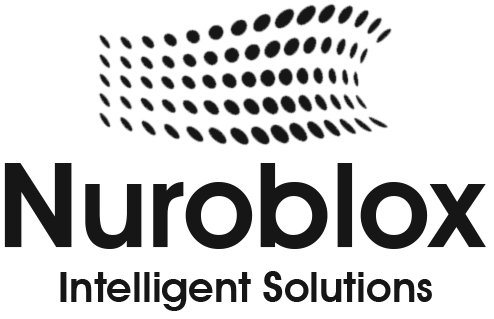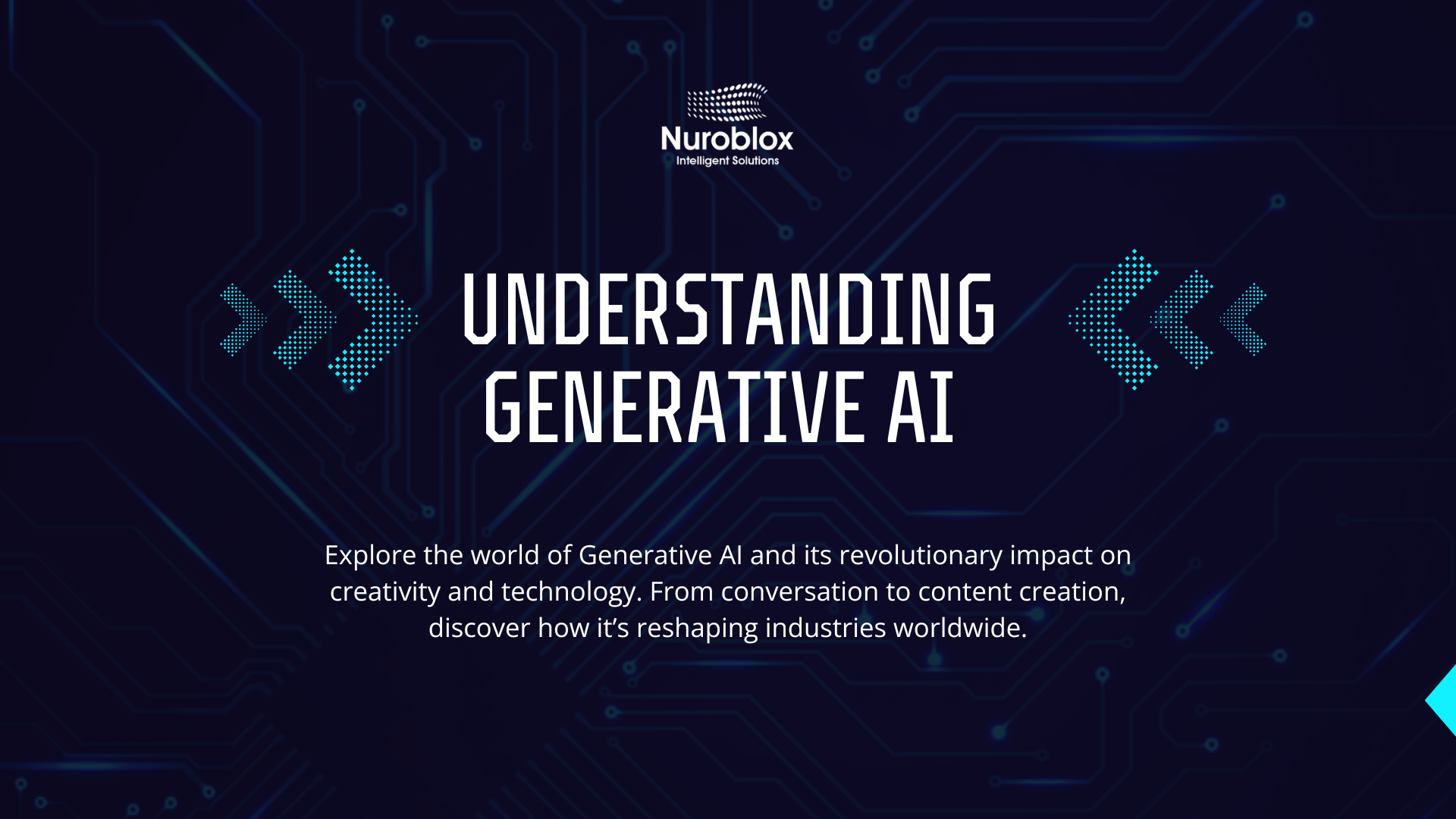Understanding Generative AI
Generative artificial intelligence has emerged as one of the most transformative technologies of our time, fundamentally changing how we create, interact with, and process information. From AI’s conversational prowess to sophisticated image generation tools, generative AI is reshaping entire industries and redefining what’s possible in the digital realm.
What is Generative AI?
Generative AI is a sophisticated subset of artificial intelligence that creates original content text, images, videos, audio, and code in response to user prompts or requests. Unlike traditional AI systems designed for specific tasks, generative AI leverages deep learning models and neural networks to understand patterns in vast datasets and produce novel, contextually relevant content.
At its core, generative AI relies on foundation models, massive neural networks trained on diverse datasets that provide broad knowledge assimilation. These models, including the GPT series, Palm, and Gemini, use transformer-based architectures to process natural language and generate human-like responses.

1. User Prompt Intake – The Catalyst of Creativity
At the heart of every generative AI interaction lies the user prompt, a deceptively simple sentence that ignites a complex chain of events. Today’s systems support a spectrum of prompt modalities –
- Natural Language Nuance – Beyond mere keyword matching, state-of-the-art models parse tone, sentiment, and implicit intent. A marketing team’s “write a playful brand story” prompt will yield vastly different results than “draft a formal executive summary,” even if both requests share topic overlap.
- Structured Templates & Metadata – Enterprises layer prompts with metadata to target audience, desired reading level, regional dialect preferences, and compliance constraints. This metadata ensures outputs adhere to brand guidelines and regulatory frameworks without manual review.
- Multi-Modal Fusion – Users can upload images, sketches, audio clips, or raw data files alongside text. For example, feeding an AI a rough architectural sketch plus the prompt “generate a colour rendering in Art Deco style” accelerates concept ideation by merging visual cues with design semantics.
2. Feature Detection & Analysis – Decoding the Ask
Once ingested, the prompt undergoes advanced feature extraction, powered by transformer layers and attention mechanisms –
- Semantic Graph Construction – The AI builds a graph of entities, relationships, and attributes derived from the prompt. In a product description request, it identifies product features (size, colour, use cases) and infers desired sales tone.
- Intent Disambiguation – Leveraging auxiliary models trained on user histories, the system determines whether “draft a project plan” implies a high-level roadmap or a detailed Gantt chart, adapting its approach accordingly.
- Contextual Memory Retrieval Sophisticated platforms maintain session memory, recalling prior interactions to maintain narrative consistency. A serialized conversation about “marketing metrics” seamlessly transitions to “optimize next-quarter KPIs” without re-establishing context.
3. Pattern Matching & Knowledge Retrieval – Mining the Model’s Brain
The AI then performs a dual-pronged search-
- Internal Embedding Similarity – The prompt is transformed into a dense vector and compared against billions of learned embeddings to locate the most relevant linguistic and conceptual patterns.
- Retrieval-Augmented Generation (RAG) – For domain-specific queries like legal clauses, scientific research, financial data, the AI dynamically queries external knowledge stores (databases, document repositories, proprietary corpora) and integrates fresh information into its response.
This hybrid approach ensures outputs are both innovative (drawing on deep model patterns) and accurate (anchored to up-to-date references).
4. Response Building & Generation – Crafting the Narrative
With relevant knowledge in hand, the model constructs the initial draft –
- Dynamic Content Structuring – Using learned templates for essays, reports, or creative storytelling, the AI organizes content into coherent sections like introductions, key points, summaries, automatically adjusting length and depth based on user preferences.
- Adaptive Style Transfer – By analyzing tone (academic, conversational, persuasive), the model seamlessly shifts its linguistic style. It can mimic Hemingway’s brevity or adopt a playful, marketing-driven cadence with equal finesse.
- Multi-Modal Synthesis – Advanced engines embed generated images, charts, or code snippets inline. For instance, a data-driven blog post might include automatically generated graphs illustrating key trends alongside the narrative.
5. Decoding Hidden Insights & Generating Relevant Output
Beyond surface-level responses, generative AI uncovers latent patterns –
- Trend Extraction – By analyzing aggregate data (social media sentiment, sales figures, scientific publications), the AI surfaces emerging trends and predicts future shifts, presenting them as actionable insights.
- Scenario Simulation – For strategic planning, the AI can simulate “what-if” scenarios projecting outcomes based on hypothetical changes (e.g., adjusting marketing spend or altering supply-chain variables).
- Personalization Algorithms – The system tailors recommendations or content variations for individual users, leveraging profiles to boost engagement and conversion rates.
6. Polishing & Enhancements – Ensuring Excellence
Before final delivery, outputs undergo rigorous refinement –
- Automated Grammar & Style Checks – Proprietary modules ensure adherence to style guides (APA, Chicago, company handbooks) and correct grammatical errors.
- Fact-Checking & Source Attribution – Integrated verification pipelines cross-reference statements against trusted datasets, flagging potential inaccuracies and embedding citations where needed.
- Bias & Sensitivity Review – AI auditing tools detect problematic language or unintended biases, prompting automated re-writes or human review workflows.
- Creative Refinement – For creative tasks, the model may propose alternative phrasings, colour palettes, or design tweaks, offering users multiple polished variants.
7. Visual & Text Formatting – Enhancing Readability
Presentation is as crucial as content –
- Smart Layout Engines – The AI applies optimal heading hierarchies, bullet-list placements, and white-space balancing for maximum readability on web and mobile.
- Code & Data Highlighting – Technical content is formatted with syntax highlighting, interactive code playground links, and embedded notebooks for immediate experimentation.
- Illustrative Graphics – On-the-fly chart generation translates data points into visual stories like bar graphs, heat maps, network diagrams tailored to narrative flow.
8. Feedback Capture & Continuous Improvement – Closing the Loop
Generative AI thrives on iterative learning –
- Real-Time Usage Analytics -Platforms monitor click-through rates, time-on-page, user edits, and explicit ratings to gauge content effectiveness.
- Adaptive Model Updates – Feedback signals automatically feed back into fine-tuning pipelines, refining model parameters for improved future performance.
- User-Driven Customization – Organizations can inject proprietary data or fine-tune models on niche corpora like industry reports, brand lexicons, product catalogues, ensuring outputs evolve with changing requirements.
Industry Applications and Impact
Generative AI is revolutionizing multiple sectors with unprecedented speed and efficiency –
Business Operations
- Content creation – Automating marketing materials, reports, and documentation
- Customer service – Powering intelligent chatbots and virtual assistants
- Data analysis – Generating insights from complex datasets and market trends
- Process automation – Streamlining workflows and reducing manual tasks
Healthcare and Research
- Drug discovery – Accelerating pharmaceutical research and development
- Medical documentation – Generating patient reports and clinical summaries
- Diagnostic assistance – Supporting medical professionals with pattern recognition
Retail and E-commerce
- Product descriptions – Creating compelling, personalized marketing content
- Customer recommendations – Delivering hyper-personalized shopping experiences
- Inventory optimization – Forecasting demand and managing supply chains
Creative Industries
- Content generation – Producing articles, scripts, and marketing materials
- Visual design – Creating images, logos, and multimedia content
- Product development – Accelerating prototyping and design iterations

Reinventing Creativity at Scale
Generative AI augments human imagination, enabling rapid ideation from ad campaigns to film storyboards. By automating routine tasks, creatives reclaim bandwidth for high-value innovation.
Operational Resilience
Dynamic content generation and data-driven insight delivery bolster decision-making agility. In volatile markets, organizations that integrate generative AI workflows can pivot strategies in real time.
Ethical Stewardship
As generative AI blurs lines between human and machine authorship, ethical governance becomes paramount. Establishing transparent provenance, audit trails, and usage guidelines ensures responsible deployment.
The Road Ahead
- Autonomous AI Agents will handle complex projects end-to-end from market research to campaign launch under minimal human supervision.
- Federated Learning Architectures will enable privacy-preserving collaborations across organizations, enriching models without exposing sensitive data.
- Regulatory Maturation will introduce standardized frameworks for AI accountability, fairness assessments, and cross-border data compliance.
Embracing the Generative AI Revolution
Generative AI represents a pivotal moment in technological evolution, offering unprecedented opportunities to enhance human creativity, productivity, and problem-solving capabilities. While challenges remain around ethics, accuracy, and implementation complexity, the technology’s transformative potential is undeniable.



